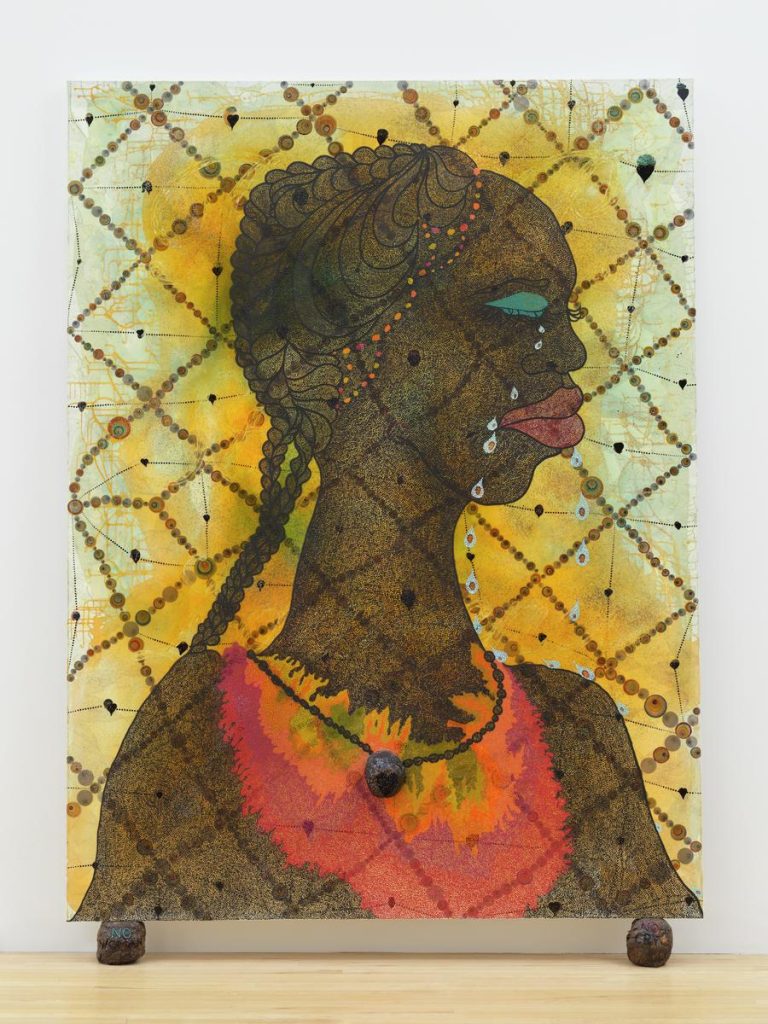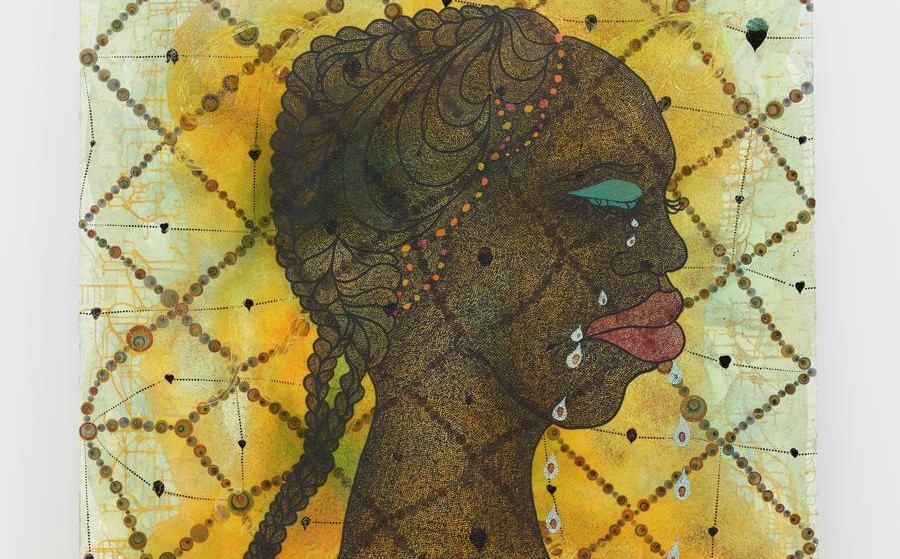British painter Chris Ofili’s vibrant and intricate paintings are widely recognised for incorporating various materials, such as glitter, resin, and—most famously—elephant dung. Ofili, born on October 10, 1968, in Manchester, England, rose to prominence in the 1990s as a well-known Young British Artist (YBA).
One of his most well-known works is “No Woman, No Cry” (1998), which honours a victim of racial violence and was given the Turner Prize that year. The picture depicts a woman’s portrait on a blue background. Ofili represented fertility and rebirth through a collage of materials and imagery, including elephant dung, as a cultural metaphor. In Chris Ofili’s artwork, race, identity, and cultural legacy are often tackled. He draws influence from various sources, including African art, hip-hop, and religious images. Ofili’s artwork is distinguished by its stunning use of colour, intricate details, and a combination of traditional and non-traditional materials.
In addition to painting, Ofili has worked on several projects, including making a tapestry for the British Parliament and designing sets for the Royal Opera House. International exhibitions have highlighted his contribution to contemporary art. The information provided here is based on what I knew in January 2022; after that, there may have been other changes to Chris Ofili’s career or the art world.
Chris Ofili and Art

Ofili’s inventive use of materials in his artwork is well known. Unconventional materials like glitter, resin, and elephant dung are included in his works. This gives his work additional dimension and texture while challenging conventional ideas about what qualifies as art supplies. Ofili’s art often explores complex racial, identity, and cultural heritage themes. His works engage with African and Western cultural influences, reflecting a global perspective. “No Woman, No Cry” is a poignant tribute addressing racial violence and cultural identity issues.
In 1998, Chris Ofili was awarded the Turner Prize, one of the most prestigious prizes in modern British art. For this accomplishment, which won him recognition worldwide, he solidified his position as one of the critical members of the Young British Painters (YBAs), a group of artists that gained notoriety in the UK throughout the 1990s.
Ofili’s distinct style and thematic analysis have contributed to the advancement of modern art. His ability to blend traditional creative processes with references to contemporary culture has influenced artists working in subsequent generations. Ofili’s artwork has been exhibited in prestigious galleries and art institutions across the globe, contributing to the discourse on contemporary art. His international reach has aided in raising awareness of the diverse perspectives and cultural influences present in the art industry.
Ofili has painted and worked on other artistic projects, including set designs for the Royal Opera House and tapestries for the British Parliament. His multidisciplinary approach demonstrates flexibility and an openness to many kinds of art.
No Woman, No Cry by Chris Ofili
Chris Ofili’s “No Woman, No Cry” is among his most well-known and acclaimed compositions. An homage to Doreen Lawrence, the mother of Stephen Lawrence, a young Black man killed in a race-motivated attack in London in 1993, this 1998 painting was done. The title of the artwork alludes to the same-titled Bob Marley song.
The picture depicts Doreen Lawrence as a tranquil woman. Ofili used a variety of tools and techniques to produce the artwork. The subject’s tears, which are rendered as three-dimensional collaged resin drops, are one striking feature. The incisions form the words “R.I.P. Stephen Lawrence,” lending the work a dramatic and powerful new significance level.
Ofili is well-known for using elephant dung—a cultural allusion and symbol of fertility and rebirth—in his artwork. It is added to the painting’s surface to create the illusion of layers and texture.
The Turner Prize win of “No Woman, No Cry” in 1998 brought Chris Ofili’s art to a far wider audience. The artwork is a profoundly personal and emotional tribute to a mother who has lost her child, but it also makes a larger message opposing racial injustice and cruelty. It perfectly illustrates Ofili’s ability to combine unique materials, cultural references, and intricate details to create a visually striking and intellectually challenging work of art.






